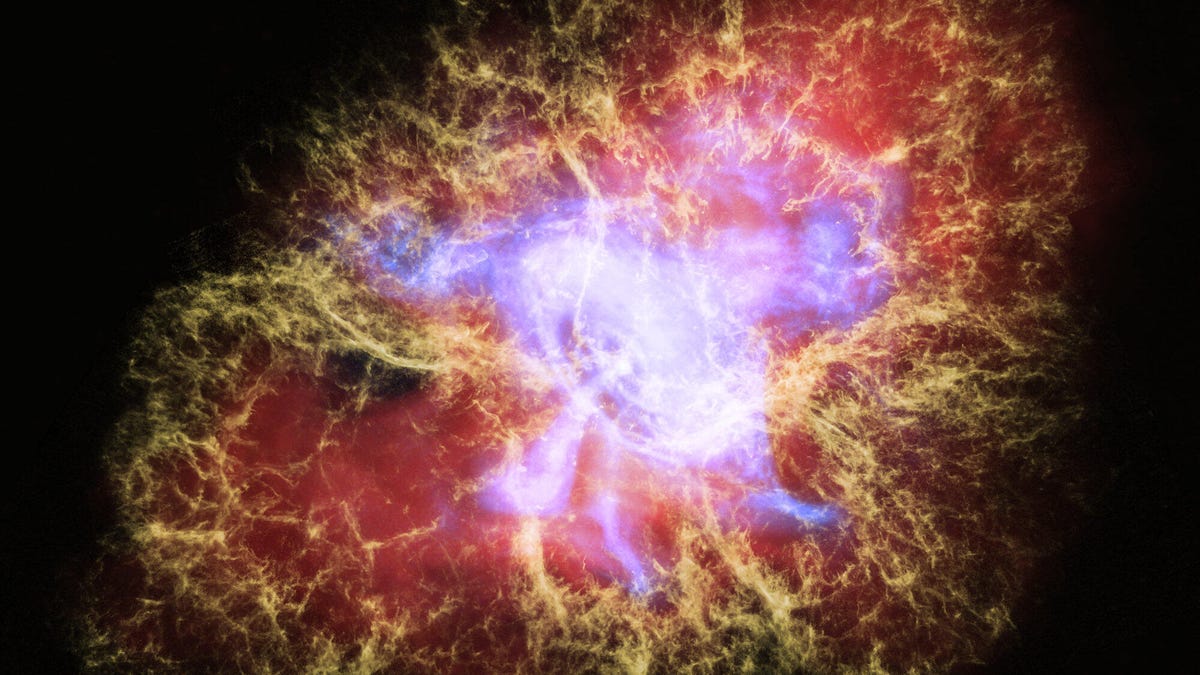The Crab Nebula is almost impossibly powerful, new study says
The remnants of a stupendous supernova explosion continue to bewilder scientists.

The Crab Nebula was formed by the remains of an exploded star.
Scientists say one of the most iconic objects in the cosmos is even brighter and more energetic than previously thought, resetting the standard for how astronomers measure sources of ultra-high energy gamma rays like pulsars and neutron stars.
The Crab Nebula was formed from the supernova explosion of a massive star in A.D. 1054, creating one of the most spectacular ongoing cosmic fireworks displays. The brilliant light show has been driven for the past millennium by a pulsing neutron star leftover from the explosion known as the Crab Pulsar, which is one of the brightest known sources of high-powered X-rays and gamma rays.
The Crab Nebula is so consistently bright, in fact, that it's considered the "standard candle" for studying ultra-high energy sources. In fact, a "crab" is a unit of measurement defined as the intensity of the Crab Nebula at the X-ray wavelength.
New measurements from China's Large High Altitude Air Shower Observatory, aka LHAASO, indicate that the nebula is capable of shining even brighter. The observatory high in the Himalayan foothills discovered a photon of energy from the nebula measuring one quadrillion electron volts, a level so high that it points to the existence of a natural particle accelerator near the center of the Crab Nebula that is about one-tenth the size of our entire solar system. Such a system would be able to energize electrons to levels 20,000 times that which the accelerators constructed on Earth at places like CERN can accomplish.
A paper by the LHAASO Collaboration, led by Zhen Cao at the Chinese Academy of Sciences, was published in the latest issue of the journal Science.
A statement from the Chinese Academy of Sciences reports that the new measurement could revise the standard candle for ultra-high energy sources upward by over 1,000 times from the previous baseline set by earlier observations of the Crab Nebula.
LHAASO "has accurately measured the brightness over 3.5 orders of magnitude of the standard candle in high-energy astronomy, thus calibrating a new standard for ultra-high-energy (UHE) gamma-ray sources."
In fact, researchers suggest that the level of acceleration happening within the Crab Nebula approaches the absolute theoretical limit, according to our current understanding of physics.
LHAASO, which is brand new and not even fully operational yet, promises to help researchers deliver a more thorough picture of what exactly is possible in such powerful and violent corners of the cosmos.
Follow CNET's 2021 Space Calendar to stay up to date with all the latest space news this year. You can even add it to your own Google Calendar.

